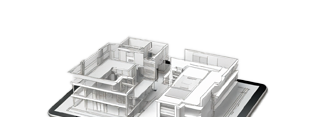- Comments (0)
Create a Parametric Truss in 5 Minutes with Grasshopper/Rhino
Parametric design is revolutionizing the way we conceive and model complex structures.
In this quick video, discover how to create a fully parametric truss in just 5 minutes using Grasshopper and Rhino. You’ll learn how to automatically generate modular structures and adjust parameters to explore different configurations instantly.
In this blog, I’ll show you what 90% of engineers overlook, why it causes problems, and how to fix it to achieve perfect assemblies every time.
Why Use Grasshopper for a Truss?
Grasshopper allows you to:
- Automate the creation of complex geometries.
- Quickly test different configurations.
- Prepare models ready for export to Revit or other BIM tools.
A Brief History of Parametric Design
Parametric design evolved from traditional form-making, where architects and engineers manually shaped structures, to form-finding, where computational methods generate optimal geometries based on defined parameters. The movement gained momentum in the 1960s with pioneers like Frei Otto, who explored lightweight and tensile structures using physical models and early computational simulations.
In the 1980s, architectural computation advanced with the development of CATIA (by Dassault Systèmes, 1981) and Rhinoceros 3D (1998), allowing designers to manipulate complex surfaces digitally. The 2000s saw the emergence of Grasshopper for Rhino (2007), which democratized parametric workflows by linking geometry to editable parameters without traditional programming. Other tools such as GenerativeComponents (Bentley, 2001) and Maya with scripting for architecture contributed to this computational revolution, enabling engineers and architects to explore adaptive structures, optimize material use, and automate repetitive tasks.
Today, parametric design is a standard in structural engineering, facade design, and BIM workflows, bridging creativity and precision while reducing errors and accelerating project delivery.
Projects Realized with Parametric DESIGN
💡 Many iconic structures have leveraged parametric workflows:
Parametric design lets engineers and architects save time and explore ideas without boundaries.

Yahya TEBAA
Conclusion
Conclusion
By using parametric modeling, these projects achieved precision, reduced construction errors, and accelerated delivery, proving the real-world power of this approach.


Next Steps:
Next Steps:
- Try building your first parametric truss in Grasshopper/Rhino.
- Test multiple configurations to see how parameters affect the structure.
- Combine manual assembly verification in Tekla to ensure your designs are construction-ready.
🚀 Don’t let small oversights ruin your projects. With parametric modeling and careful assembly, you can save time, reduce errors, and unlock unlimited design possibilities.



